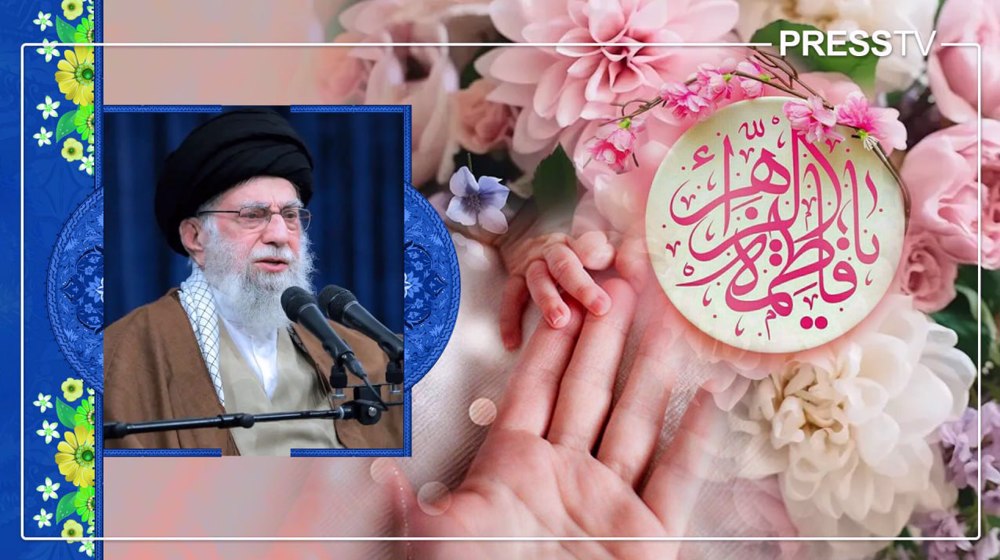Battle to save last remaining Asiatic cheetahs on earth continues in Iran
By Maryam Qarehgozlou
The battle to save Asiatic cheetahs and prevent their extinction, complicated by various natural and human-induced threats, is in full swing in habitats across Iran.
In 2007, Iranian wildlife experts decided to mark August 31 as 'National Cheetah Day' in a bid to encourage and promote the idea of preserving the last remaining population of Asiatic cheetahs on Earth — in Iran.
The Asiatic cheetah is relatively smaller than its African cousin. It has distinctive black tear marks running from its eyes down the side of its nose, fawn-colored fur that is paler on the sides, and small black spots scattered on its body.
Also known as the 'Persian cheetah', the species became extinct in virtually all countries in Asia and only a small population continues to live in Iran. It is categorized as critically endangered on the International Union for Conservation of Nature (IUCN) Red List.
They inhabit desert-like mountain areas in central, eastern, and southeastern parts of the country, in wildlife refuges located in the provinces of Semnan, Yazd, Kerman, and north, south and Razavi Khorasan.
Camera traps installed by environmental bodies in their habitats monitor the endangered species' population to evolve ideal strategies for protecting them.
However, serious threats primarily posed by habitat fragmentations, drought spells, prey loss, persecution by livestock herders and their dogs, road accidents, and illegal poaching are shrinking the vulnerable population of the world's fastest mammals.
Roadkill, a main threat
In July, a two-year-old cheetah was killed on the Abbasabad-Mayami road in the central Iranian province of Semnan. This is where most Asiatic cheetahs have over the years been hit by vehicles and lost their lives.
In March, another cheetah, pregnant with three cubs, was killed in an accident on the same road, which links Tehran to Mashhad.
Since 2010, at least 10 cheetahs have been killed in car collisions on this 'killer' road, an almost 40-kilometer area with the highest rate of animal-vehicle collisions.
Hassan Akbari, deputy head of the natural environment and biodiversity wing at Iran's Department of Environment, after his visit to the area on Wednesday morning, told the Press TV website that some notable progress has been made to reduce wildlife mortality on this road.
Akbari said some wildlife warning signs as well as reflective guide signs have been installed on the Abbasabad-Mayami road and some others will be installed soon.
Light installation on the 10-kilometer stretch for safer movement of the vehicles at night is also currently underway, he informed.
“The lights are installed on about one kilometer of the road and they will be installed on the remaining 9 kilometers within the next two months according to the contractor,” he hastened to add.
Akbari also told the Press TV website that speed enforcement cameras will be installed along the road to monitor drivers’ compliance with speed limits in the region.
The official explained that as per a new law adopted by the Iranian parliament, the speed limit on the Abbasabad-Mayami road is 90 kilometers per hour for a one-year test period.
The newly adopted law is waiting for approval by the transport ministry, he said.
“While the aforesaid measures will to some extent ensure the safety of cheetahs on the road, the measures are yet to be fully implemented and we are still worried about the endangered animals as busy traffic is expected on the road as the end of the summer season is approaching,” he stated.
Conservation efforts
Cheetah conservation projects have been underway in Iran since 2001, backed by the United Nations.
In line with plans to revive the declining population of Asiatic cheetahs, experts decided to experiment captive breeding of the species.
First attempts to fertilize female cheetahs failed for years, but in May 2022, “Iran,” a female Asiatic cheetah, with a high chance of pregnancy, who had mated with “Firouz”, a male cheetah, gave birth to three cubs.
Two of the cubs died within the first two weeks of their birth but one of them named “Pirouz,” which translates into “victorious” in Persian, managed to survive despite heavy odds.
Sadly, in February, Pirouz also died of acute kidney failure.
After the unfortunate death of the cubs, many experts began to question the idea of captive breeding and its implications for the cheetah’s viability.
However, Akbari told the Press TV website, the captive breeding project will continue.
“The project will help in setting up an animal gene bank for future use,” he said.
According to the Veterinary Information Network, preserving the genetic resources of endangered wild species and the creation of genetic resource facilities and banks will help in conserving the genetic diversity of remnant populations, and the survival of the endangered species.
Recent advances in assisted reproductive technology (ART), cryopreservation of cells and tissues and emerging molecular cell biology techniques offer means whereby genetic resources represented by these species can be saved for future generations, says the network.
Akbari explained that in case they fail to save the species in their natural habitats their genes will hopefully help them revive the species.
How many cheetahs are left in Iran?
According to Nazanin Hosseini, M.Sc. of environmental science engineering, it is virtually impossible to cite an exact number of remaining cheetahs who are still breeding across millions of hectares of their habitats.
“All numbers announced by officials or other environmental experts are not exact and lack a scientific basis,” she said in a conversation with the Press TV website.
“For one, we may have not installed enough camera traps in areas where some cheetahs, especially female ones, live, so they are not included in our estimates,” she added.
Hosseini said with the dwindling population of cheetahs in Iran, recognizing threats facing them and coming up with strategies to save them is of great significance.
“Saving cheetahs' natural habitats, preventing habitat fragmentation, an integrated planning for all habitats, and increasing the number of rangers patrolling the habitats could help save the species,” she asserted.
Maryam Qarehgozlou is a Tehran-based journalist who has worked extensively on environment and wildlife conservation.
Trump admin. asks transportation body to share passenger names in expanded deportation push: Report
UN sounds alarm over record Palestinian displacement, surge in illegal settler attacks in West Bank
Iran emerges as global fertility hub, blending innovation, research and scientific excellence
VIDEO | EU freezes Russian assets
Iran’s PMI slips 0.8 points to 49.8 in November: ICCIMA
Two US soldiers, interpreter killed in surprise attack in Syria: CENTCOM
VIDEO | Epstein in Africa
VIDEO | Birth anniversary of Hazrat Fatima celebrated in Kashmir










 This makes it easy to access the Press TV website
This makes it easy to access the Press TV website